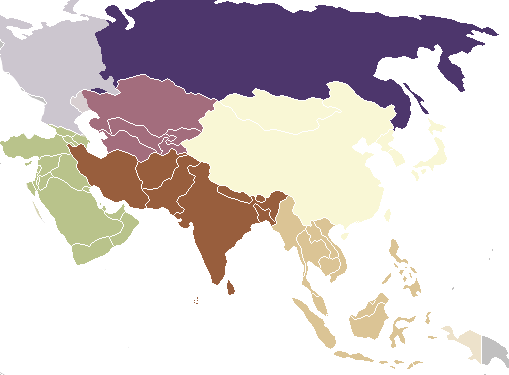NEWS &VIEWS
Forecasts, Commentary & Analysis on the Economy and Precious Metals
Celebrating our 46th year in the gold business
October 2019
“Gold has everything going for it.” – Paul Tudor Jones
What makes this gold market rally different from all others
1. It is led by institutions and funds, not private investors. Global quantitative easing created a huge and mobile pool of capital in constant need of a place to call home. As the need for a safe haven became apparent among the stewards of that capital, the demand for gold flourished. The consistent presence of funds and institutions as buyers in this rally, as represented by the growth in ETF stockpiles, is one of its hallmarks and represents one of the major differences between this gold rally and rallies of the past. Though private investors have been late to the game, the rapid development of the physical market for gold coins and bullion in the United Kingdom is testament to the fact that sentiment can change quickly.
2. Day-to-day price reversals often originate in Asia and Europe, not just the United States. For decades, the U.S. commodity markets set the tone for gold pricing and the rest of the world was content to follow. Even the old London price fix tended to follow along with trends established in the United States. That all changed when the Shanghai gold market began offering its own pricing mechanism and the effects of Brexit began to have a profound impact on both sides of the English Channel. Now, price reversals often begin in Asian or European markets overnight and carry over to the open in New York rather than the other way around. All of this is a reflection of ramped up global investor interest in gold and a leveling of the playing field in terms of who and what influences the price on a daily basis. As such, it comprises our second important difference between the current gold price rally and rallies in the past.
3. Central banks are buyers of physical gold, not sellers. In 2011 something unusual happened in the gold market. Central banks flipped from being net sellers of the precious metal to net buyers reversing a 40-year trend. Since then, the official sector has added 4,563 metric tonnes to their coffers (through the first half of 2019) – a 15% gain in stockpiles to 34,407 metric tonnes. The gold that central banks take off the market, though, is only part of the story. The rest has to do with how domestic production in two key producing countries – China and Russia (the world’s number one and three producers) – is treated. Both countries channel their mined metal into national reserves rather than selling it in the global marketplace. Many analysts see this new and evolving approach to gold reserves as the key difference between the present gold rally and rallies of the past.
4. Bullion banks are covering their shorts on price retreats, not piling-on. Declining global interest rates have put a damper on another traditional source of physical gold supply – bullion bank leasing programs. “We can conclude,” writes gold market analyst, Alasdair Macleod, in an insightful paper published at the GoldMoney website, “that the basis for highly geared interest rate arbitrage by borrowing gold is running into a brick wall. Not only is there no incentive for lessors but also there is also a diminishing appetite for lessees because the opportunities are vanishing. Synthetic gold liabilities are being gradually reduced, not only by ceasing the creation of new obligations, but by buying bullion to cover existing ones. This will have been particularly the case when the USD yield curve began to invert in recent months (itself a backwardation of time preference), and was the surface reason, therefore, that the gold price moved rapidly from under $1200 to over $1500.” This change in direction for bullion banks represents another fundamental difference between this rally in the gold price and rallies of the past. What’s more, given the entrenched low-rate environment, it looks like it might remain a factor for some time to come.
5. Yields in economically important parts of the world are negative, not positive. Negative interest rates are a reality in both the European Union and Japan, and Alan Greenspan said recently that it is “only a matter of time” before they spread to the United States. One of the arguments against gold over the years has been that it costs money to own it. Now it costs money to own euros and yen, and before too long it might cost money to own the dollar as well. The advent of negative rates is perhaps one of the more profound differences between this gold rally and rallies of the past. It might also prove to be the most enduring. “One of the reasons,” Greenspan added in that same CNBC interview, “the gold price is rising as fast as it is – you know, at $1500 a troy ounce . . . What that is telling us is that people are looking for resources they know are going to have a value 20 years from now, or 30 years from now, as they age and they want to make sure they have the resources to keep themselves in place.”
|
Account Form – Precious Metals Storage Account Please call or email if you have any questions. |
Gold and emerging markets
An alternative to the dollar
In a recent GoldHub interview, the former governor of the Reserve Bank of India, Duvvuri Subbarao, made some interesting observations with respect to emerging countries’ attitude towards gold ownership as a national reserve asset. “‘In the immediate aftermath of the crisis,” he says, “we had to sell dollars to prevent our currency going into freefall. During Quantitative Easing, we had to buy dollars to protect our financial stability. And when the Federal Reserve began to taper QE, exchange rates slumped again and we had to defend ourselves with our reserves. All these events prompted one obvious question – Is there an alternative to the dollar?” Subbarao, goes on to explain that if central banks cannot rely on the dollar for stability then they need to find it elsewhere. “Holding gold within our reserves,” he adds, “is an integral part of that self-defence.” As it is, we might add, for private individuals as well.
Households in India pile up 24,000 tonnes of gold
India’s Financial Express tells us that “Households in India may have piled up around 24,000-25,000 tonnes of gold, remaining the world’s largest holders of the precious metal,” according to the World Gold Council. . .At current prices, the value of that private stockpile amounts to over $1.1 trillion – “or equivalent of more than 40% of India’s nominal gross domestic product” for the year. To give you an idea just how much gold the people of India own in the overall scheme of things, the total amount of gold held by governments and central banks globally is 33,976 tonnes, according to World Gold Council statistics.
Russia’s huge gold stash is worth more than $100 billion
“The country [Russia] quadrupled gold reserves in the past decade as it diversified away from U.S. assets,” reports Bloomberg, “a move that has paid off recently as haven demand sent prices to a six-year high. In the past year, the value of the nation’s gold jumped 42% to $109.5 billion and the metal now makes up the biggest share of Russia’s total reserves since 2000.” Russia’s reserve gains via appreciation of the precious metal will not be lost on a whole host of other countries looking to move in the same direction.
Gold as a central bank reserve asset
In a recap on the year with respect to central bank buying, the World Gold Council reports: “In 2018, central banks bought more gold than at any time under the existing international monetary system. The vast majority of demand has come from emerging and developing country central banks. 19 individual central banks bought more than one tonne of gold in 2018, giving rise to total purchases of 651 tonnes. Even the European Union re-emerged as a net buyer, due to substantial purchases from Poland and Hungary.”
If you think you could benefit from a concise review of the latest news, analysis, and opinion on the gold market from a variety of expert sources, then News & Views is the newsletter for you. Since the early 1990s, we have offered it free-of-charge as a monthly service to our regular clientele and as an incentive to prospective clients. By subscribing, you will automatically receive future editions and occasional in-depth Special Reports by e-mail.


 It only takes a few minutes to complete a Precious Metals Safe Storage account opening form, but it could mean all the difference for the investor seeking a superior alternative to gold and silver ETFs. We use the word “superior” because depository storage accounts come with an option not readily available in most ETF accounts – You can take delivery of the metal in your account, or any portion of it, whenever you wish. At the same time, given the exclusive preferred referral storage rate you receive by opening your storage account through USAGOLD, the annual cost to maintain your holdings is comparable (and often lower) to what most ETF vendors charge in annual fees. All the while, your metal is stored safely and fully insured at one of America’s oldest, largest and respected independent depositories – a firm with which we personally have done business for decades. To get started, we invite you to go to the link immediately below and fill out the application.
It only takes a few minutes to complete a Precious Metals Safe Storage account opening form, but it could mean all the difference for the investor seeking a superior alternative to gold and silver ETFs. We use the word “superior” because depository storage accounts come with an option not readily available in most ETF accounts – You can take delivery of the metal in your account, or any portion of it, whenever you wish. At the same time, given the exclusive preferred referral storage rate you receive by opening your storage account through USAGOLD, the annual cost to maintain your holdings is comparable (and often lower) to what most ETF vendors charge in annual fees. All the while, your metal is stored safely and fully insured at one of America’s oldest, largest and respected independent depositories – a firm with which we personally have done business for decades. To get started, we invite you to go to the link immediately below and fill out the application.
